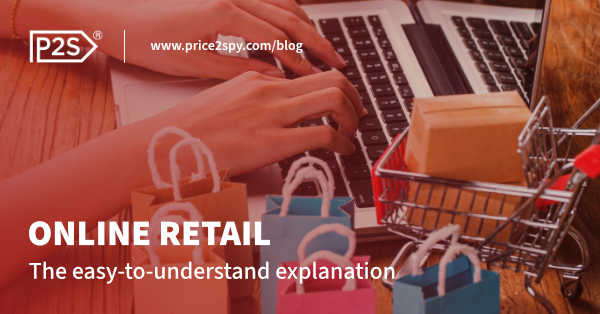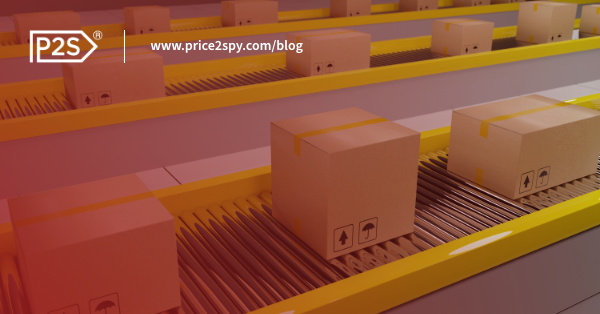
Online Retail: The Easy-to-Understand Explanation
When it comes to making purchases, online retail is name of the game nowadays. It is where the action is.
However, the world of online retail is more complex than it seems at a first glance.
Whether you’re a shopper, a store owner, or someone dreaming of starting your own online store, this article will walk you through what online retail really means—without the jargon.
What is online retail?
Online retail is the act of selling products (primarily physical) to consumers through the Internet.
Every online retail business must at least have a functioning digital storefront. Digital storefront is an online place where customers can browse, purchase, and pay for products. Examples are websites, mobile apps, and various platforms.
However, online retail goes much beyond simply launching a website. It includes a mix of various tools, strategies, and analysis that shape how purchases are made.
It is usually an extension of a retailer’s physical presence. There may be some exceptions, such as SHEIN,
The primary advantage of online retail is that customers can buy from (almost) anywhere at any time. Also, the overhead costs are significantly lower compared to the brick and mortar retail stores
The main downside is that the customers cannot physically feel the product. This may lead to an increased number of returns.
Online retail is primarily focused on business-to-consumer (B2C) transactions. As we will see later on in the article, there are other types of transactions, which can be more broadly categorized within eCommerce as a whole.
Commonly mixed up terms
Online retail is a loosely used term. It is frequently mixed up with other, closely related concepts. The most common confusion occurs with eCommerce, traditional retail, dropshipping, and marketplace selling.
Let’s take a look at each of these concepts and compare them with online retail. This will help you understand better where online retail lies in the sea of similar terms and concepts.
Online retail vs eCommerce
We will start by distinguishing between online retail and eCommerce. These are perhaps the two most commonly mixed up terms on this list.
When it comes to it, you can think of eCommerce as the broader term. When talking about eCommerce, people usually refer to a multitude of online selling operations such as dropshipping, selling on marketplaces, direct to consumer businesses, wholesale, and even online retail to a certain extent.
Here, we underline ‘certain extent’, because online retail is not simply a subset of eCommerce. It is usually an extension of a retailer’s physical presence. The brand values are transferred to the online experience as closely as possible. It’s not just about launching a website where products can be sold.
Also, as we have already mentioned, online retail is primarily B2C. Ecommerce, on the other hand, can be B2C, but can also be:
- Business-to-business (B2B): businesses sell in bulk to other businesses;
- Consumer-to-consumer (C2C): individuals sell to other individuals (commonly via marketplace platforms (e.g. Facebook Marketplace));
- Direct-to-consumer (DTC): the brand acts as an online retailer in a way, and sells directly to their customers, without any middlemen.
Online retail vs traditional (brick and mortar) retail
Online retail usually has lower overhead costs compared to the traditional brick and mortar stores. There’s no storefront rent, there’s fewer staff.
Besides, an online store has more potential entry points (i.e. digital touchpoints) compared to the traditional store, which only has one (its physical entrance). Also, availability is one of the primary differentiators: online stores are available 24/7. Besides, it’s only about around-the-clock availability.
Online presence enables retailers to be available around the globe. A physical store is available only to the relatively near local or regional foot traffic.
When it comes to returns however, customers seem more likely to return their orders when buying online, as opposed to when purchasing in-store. Furthermore, it seems that shoppers in India and China are far more prone to return orders compared to other countries. This may be due to the fact that when shopping in-person, shoppers can actually feel and perhaps even try the product. This is difficult, if not impossible, over the Internet.
Another important difference we have to underline is that implementing dynamic pricing is very difficult, if not impossible in physical stores.
Online retail vs dropshipping
Dropshipping can be thought of as a method of online retailing. It lets sellers sell without keeping any inventory. The seller takes orders and sends them to a supplier, who in turn ships the items directly to the customer.
The main advantage of dropshipping is that it lowers the startup costs. Sellers don’t buy any stock until someone orders it. The downside is that the profits are lower and that the shipping and fulfillment times are longer.
Dropshippers are also generally more limited when it comes to the number of pricing strategies they can utilize, as opposed to online retailers.
Online retail vs marketplace selling
Up until recently, marketplace selling has referred to the act of selling products on a third-party marketplace (e.g. Amazon, eBay) by an independent individual, not associated with any brand.
Marketplaces were popular platforms for dropshippers and small-scale manufacturers because they offered access to a large audience, basically free of charge. This was, and still is, the main advantage of online marketplaces.
Nowadays, things are different. Large brands are starting to also establish their presence on various marketplaces. It is no longer a space reserved for entrepreneurs looking to kickstart their business. Every smart brand follows their audience, wherever they are.
The downside of marketplaces is that sellers are dependent on their algorithms, rules of the “game” can frequently change, and the competition is only increasing. You can be sure that if you decide to sell on a marketplace, competitors will be monitoring your prices from day one.
Conclusion
As you can see, online retail’s advantages and disadvantages are best understood when we compare it to other common sales channels and methods.
Same is true for understanding online retail on its own. There are many closely related, but not quite the same terms. We hope we have helped clear up at least some of the confusion.
One thing is certain, online purchases will continue to be made. Not being present online is a missed opportunity. For consumers, online retail means smarter and more convenient shopping. For sellers, it is an entry to a sea of otherwise unavailable opportunities.
Now that you know the basics, you’re better equipped to shop with confidence—or take your first steps into the world of online selling.
Free 14-day trial!
Start your Price2Spy trial now, and see how it can ease the process of implementing your pricing strategy.
Try for free







